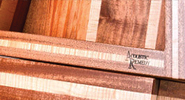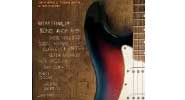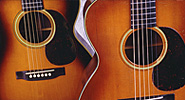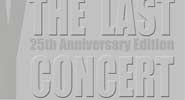Acoustic Remedy ClimaStand
Price: $899 (walnut)
Info: www.acousticremedycases.com
Most players have at least one guitar they would like to display in a manner that allows them to enjoy its beauty while keeping it easily accessible. But if you have pets or small children, or live in a dry climate, it’s just not safe to leave those guitars sitting out in a stand or on a wall. Acoustic Remedy Cases offers an attractive solution to this dilemma with its ClimaStand floor-display cases.
Guitar display cases are nothing new, but Acoustic Remedy cofounders Ryan Sauter and Adam Jacobson present a new twist on the concept. Rather than a typical rectangular glass-front case that hangs on the wall or a large multi-instrument floor case, they’ve a developed a triangular wedge-shaped single-guitar display case with an integrated tilt-back floor stand.
The Acoustic Remedy case comes well-packed in two boxes lined with 1″ ridged Sttyrofoam. One of the boxes contains the case itself, 100 percent assembled, and the other contains the floor stand (some assembly required). Also included are a small digital humidistat/thermometer, two Planet Waves HuMIDIpaks, and a small battery-powered LED light. The case tested featured solid walnut construction, a String Swing hanger, a padded backrest, two small raised areas on the bottom of the case interior for the HuMIDIpaks, a magnet to hold the humidistat/thermometer, stainless-steel hardware, and a thick, durable door seal. Over the course of several weeks, the slow-release HuMIDIpaks, the reduced interior volume of the wedge shape, the airtight construction, and the high-quality door seal resulted in super-stable humidity levels inside, requiring very little maintenance.
The test case provided by Acoustic Remedy was set up in a local retail guitar shop to display a variety of electric and acoustic guitars. Customers regularly commented not only on how cool the case looked, but how well it showed off the instruments displayed inside.
The design of the Acoustic Remedy ClimaStand offers clean lines that give it a contemporary look and vibe, and its classic-hardwood construction and satin finish complement the earthy elements of any guitar displayed within its confines, without overshadowing it, no matter if your baby is a $50,000 Martin or a $500 daily beater. And it offers far better protection than the typical stand or bulky wall case.
This article originally appeared in VG July 2013 issue. All copyrights are by the author and Vintage Guitar magazine. Unauthorized replication or use is strictly prohibited.









 The TV Jones Brian Setzer signature pickup uses a proprietary design based on the TV Jones Classic humbucker, which was in turn developed via dissection and study of a vintage Gretsch Filter’Tron. It has custom-made bobbins and alloy pole screws the company says highlight the response of the magnet and offer more clarity with punch low-end mid response. It is available in chrome, nickel and gold finishes. It is hand-built in the U.S. using American components. Visit
The TV Jones Brian Setzer signature pickup uses a proprietary design based on the TV Jones Classic humbucker, which was in turn developed via dissection and study of a vintage Gretsch Filter’Tron. It has custom-made bobbins and alloy pole screws the company says highlight the response of the magnet and offer more clarity with punch low-end mid response. It is available in chrome, nickel and gold finishes. It is hand-built in the U.S. using American components. Visit 




 (LEFT) Robby Krieger is recognized as a Gibson SG player. With the Doors, he played a ’67 Standard that served as the basis for Gibson’s new Krieger signature SG. Its neck profile was modeled after a Les Paul Junior, and its pickups are wired out-of-phase. “Other than that, the guitar is a copy of my ’67,” Krieger said.
(LEFT) Robby Krieger is recognized as a Gibson SG player. With the Doors, he played a ’67 Standard that served as the basis for Gibson’s new Krieger signature SG. Its neck profile was modeled after a Les Paul Junior, and its pickups are wired out-of-phase. “Other than that, the guitar is a copy of my ’67,” Krieger said.

 Korg’s Rimpitch acoustic-guitar tuner attaches to the sound hole and its LED tuning meter is positioned in the player’s line of sight when looking at the guitar. It has a piezo pickup that detects sound from the body of the guitar, and can be left attached when not in use. Learn more at www.korg.com.
Korg’s Rimpitch acoustic-guitar tuner attaches to the sound hole and its LED tuning meter is positioned in the player’s line of sight when looking at the guitar. It has a piezo pickup that detects sound from the body of the guitar, and can be left attached when not in use. Learn more at www.korg.com. Ampeg’s redesigned BA Series of bass combo amps employ front-facing controls, a 60-degree monitoring angle, a new cab design, and the new Bass Scrambler overdrive circuit on models BA-110 and up, which includes separate Drive and Blend controls. All have three-band EQ along with Drive and Blend controls in addition to master Volume, 1/8″ stereo auxiliary input, 1/8″ stereo output, powder-coated all-metal chassis, and front-panel backlighting. Visit www.ampeg.com.
Ampeg’s redesigned BA Series of bass combo amps employ front-facing controls, a 60-degree monitoring angle, a new cab design, and the new Bass Scrambler overdrive circuit on models BA-110 and up, which includes separate Drive and Blend controls. All have three-band EQ along with Drive and Blend controls in addition to master Volume, 1/8″ stereo auxiliary input, 1/8″ stereo output, powder-coated all-metal chassis, and front-panel backlighting. Visit www.ampeg.com.